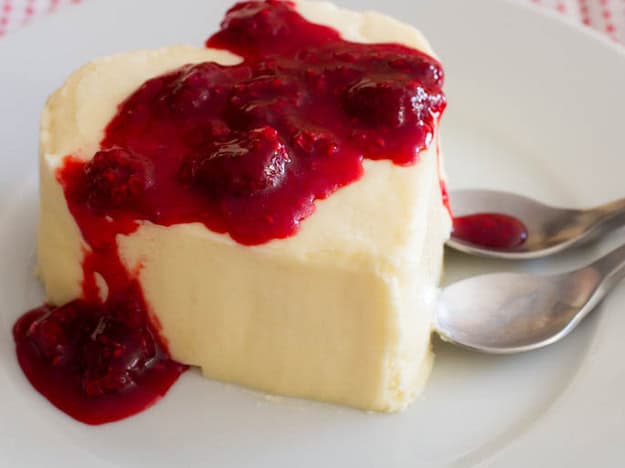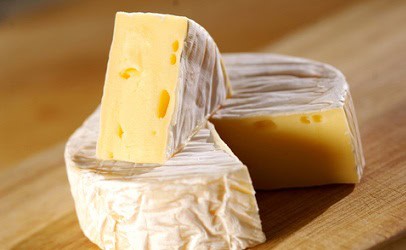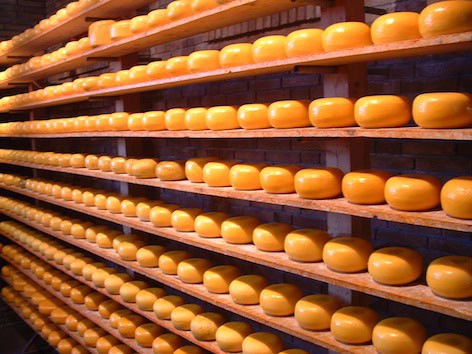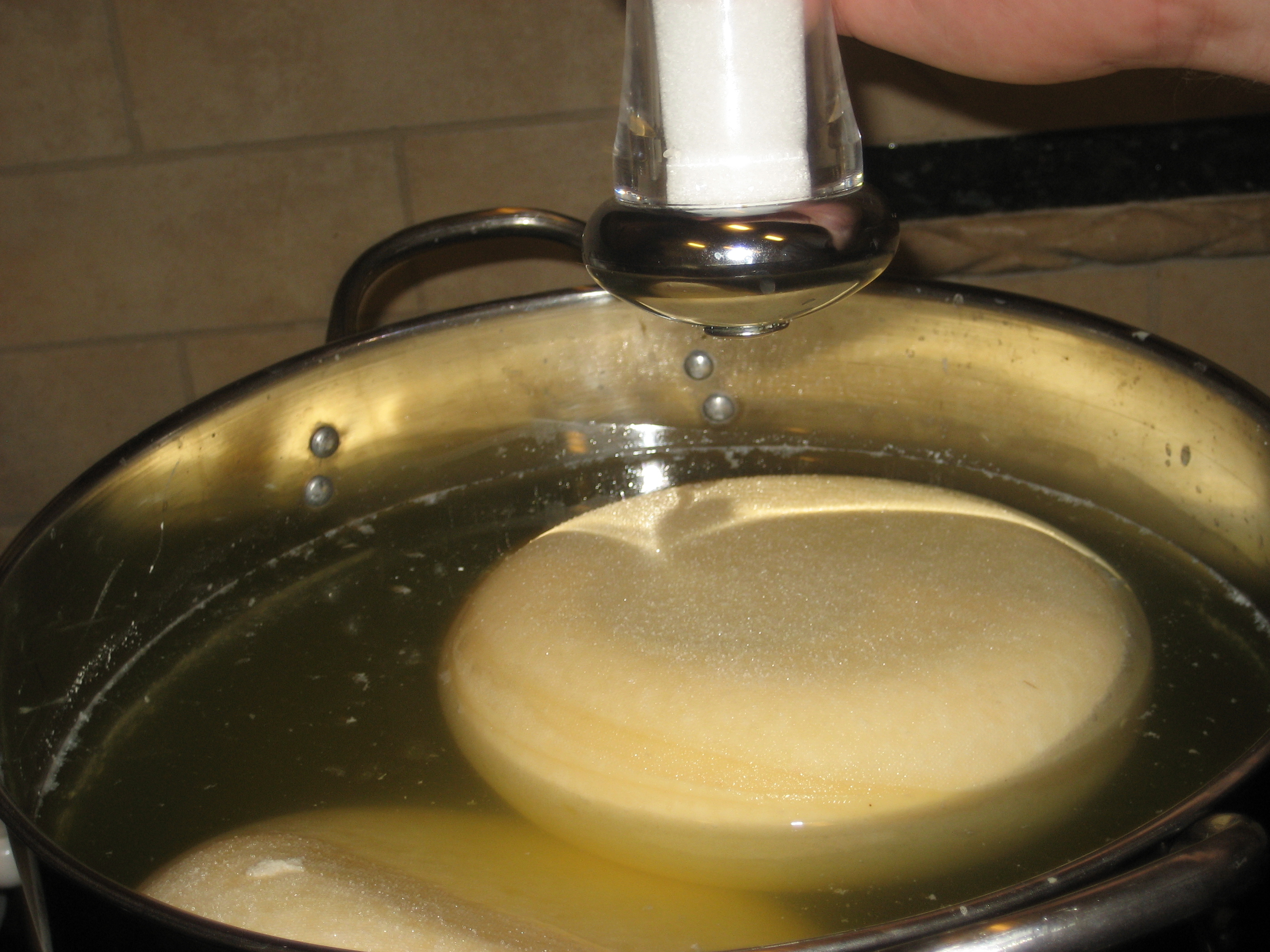Category: Traditions
Have You Ever Tried Brie Pie?
This rich and luxurious pie is not your average pie. In fact, pies in the U.S are usually eaten for dessert, but Brie pie is more of an appetizer or entree.

Luckily, like a lot of the delicious appetizers on offer, this one is fairly simple to create and has an amazing payoff. It may look quite difficult, but it only entails wrapping a wheel of brie in a thawed sheet of puff pastry and cooking it until golden. Even if it was difficult to create, the combination of warm melted cheese inside of a crispy pastry is impossible to resist and worth every effort.
The type of Brie you get isn’t too important, a rule of thumb would be to buy one that fits your hand and looks good to wrap in pastry.
Let’s get right to it and create this cheesy masterpiece!
Recipe
What You Need
8 oz of Brie
1 sheet puff pastry, thawed
All-purpose flour
1 large egg, beaten
What To Do
Firstly, preheat oven to 400 F, making sure the oven rack is in the middle of the oven. Now line a baking sheet with parchment and set it aside.
Start by rolling out the puff pastry, using the flour to dust out on the counter and then sprinkle some more flour on top to the pastry to aid rolling further. Roll the pastry so that it measures around 11 x 11 inches to make sure it fits around the Brie.
Now it is time to wrap the brie in pastry. Place the wheel of brie in the middle of the pastry and fold the corners over the brie, creating a neat package. Press against the edges gently and neaten the sides up.
Brush the pastry over with the beaten egg, making sure you get the sides and transfer the pie to the baking sheet.
Bake the pie for around 35-40 minutes or until golden brown.
Now allow cooling for 5 to 10 minutes which will give the hot cheese time to firm up.
Transfer it to a serving platter and serve it warm.
Creating Mouthwatering Halloumi
Halloumi originates from the island of Cyprus and tends to be a semi-hard, unripened, and brined cheese. It is unique for having a high melting point which means it can be easily grilled or fried- perfect for summer cookouts! What makes it better is because it doesn’t melt, it keeps its texture and shape, keeping the incredible flavor and soft insides.
Although Halloumi has been around for a long time, it is particularly getting more popular over in the western countries because there has been a rise in vegetarians, it acts as a delicious meat substitute.
This cheese is traditionally made with ewe’s milk and added cow’s milk, but it is perfectly fine to make it with just 100% cow’s milk since that is more readily available. You can even substitute the milk for your own desired type. In this recipe though, 1 gallon of cow’s milk will be used for a trial run to see if you enjoy the cheese, ingredients can easily be adjusted to fit the amount of milk you would like to use.

Recipe
What You Need
1 Gallon of Milk (not ultra-pasteurized)
1/4 Tsp Single Strength Liquid Rennet (1/8 tsp for raw milk)
1 Pack C21 Buttermilk Culture or 1/4 tsp MA4002 (no culture for raw milk)
3/8 Tsp Calcium Chloride for Pasteurized Milk
1/8 Tsp Citric Acid (for Whey Ricotta)
1/2 oz Salt
Equipment
Knife to cut curds
Large colander
Ladle or spoon to stir curds
Thermometer
What To Do
1. To begin, place your milk in a pot and heat it to around 88 degrees F. Be sure to hear slowly and stir well if heating on a stove.
Once your milk has reached the desired temperature, add the culture. The culture will be destroyed by the milk and the curds will become higher in temperature. However, they will provide special enzymes for ripening if the cheese is preserved for a short period of time.
Also, if you are adding calcium chloride or lipase, add them in this step and stir to incorporate it well into the milk.
2. Now, add the liquid rennet to a diluted 1/4 cup of water. This will begin the coagulation process. It will take approximately 30-40 minutes for total coagulation but you will notice the milk begins to thicken within 20 minutes.
3. The curds can now be cut to .75- 1.5 inch squared in a vertical manner. Then allow to stand for 5 minutes to heal and then using your ladle, cut horizontally into even sized cubes.
4. Time to cook the curds and remove the whey. Stir gently, increasing the heat slowly to 100 degrees F during 20-30 minutes.
Keep this temperature for another 20-30 minutes while stirring every 3-5 minutes.
Once that time period is over, allow the curds to settle for 5 minutes under the whey.
Cooking the cheese in hot whey is very important for the making of Halloumi, so beginning to filter off the whey from the curds is the next step. You can do this with a sanitized colander and just scoop the whey out with a ladle, cup or bowl.
Now that the whey has been separated, slowly heat the whey to 195 degrees F, without letting it boil.
5. The curds which are dry can be transferred to their form from draining. Light pressure from your hands will help the consolidation of curd and make more than 1 form, they can be stacked and reversed for a little weight.
You can allow the curds to rest with a little weight, stalking them in forms. Make sure you turn them at 20-minute intervals to form a well-consolidated cheese.
6. After the whey has been heated, it is time to give the Halloumi its true form by heating the whey for 30-40 more minutes, keeping it at a temperature of 195 degrees F for the time it takes to cook all the pieces of Halloumi. Use a ladle to keep the cheese off the bottom of the heating pot and then lower it into the whey. At first, the cheese will float to the bottom, but as it cooks, it will eventually float to the surface.
Once it floats, that means it is ready to be removed. Cool the cheese for a few seconds in cold water and then lay it on a draining mat to cool and drain a bit more.
7. While you are cooling the cheese, and it is still warm, flatten with your hand to form a larger, flatter disc of cheese.
Now finish it off by sprinkling the cheese with salt and folding it into a crescent and pressing slightly as it cools.
8. Now your cheese is done, after a 3-5 day process. You can keep it refrigerated if it is lightly salted. If you are wanting to store it more traditionally, at room temperature, the higher amount of salt will keep it well for several days.
This Coeur A La Crème Is To Die For!
Every now and then you just want something a little different to satisfy your cravings. Perhaps you’re planning a meal with your significant other or maybe you’re just in the mood for dessert. There really is no better plate to took into than Coeur a la Crème with delicious strawberries smothering it. The name Coeur a la Crème literally translates from French to “Heart of the cream”, that’s how you know it’s gonna be good!

Although there are many different variations of this particular dessert, this has got to be one of the best. It not only satisfies your sweet tooth, but it is satisfying for us cheese lovers too!
If you want to get all romantic with it, you can use a heart shaped mold to really top off this dessert.
Recipe
What You Need
– 1 tbsp granulated sugar
– 1 tbsp heavy cream
– 1 cup fromage blanc
– 2 egg whites, beaten
What To Do
Firstly, combine the sugar, cream, and cheese. Then fold in the egg whites. You now spoon the mixture into a mold lined with a butter muslin and allow it to set in the fridge for 6-10 hours.
Once it is set, gently pull the butter muslin up to remove heat from the mold.
It is all up to you what to serve it with. From experience, enjoying it topped with strawberries and syrup or even melted chocolate can leave your mouth watering!
Delicious Lemon Blueberry Ricotta Cookies
These puffy lemon blueberry cookies are so soft that they are almost like a cake. These cookies are similar to cutting off the top of a muffin and eating it, it would be extremely similar in taste and texture.

To top this delicious recipe off, you can even add a sweet glaze to drizzle all over them. Not only that, but this batter can also be used for pancake batter, so not only are these cookies good for snacks, they are amazing for breakfast too.
Recipe
What You Need
– 2 cups all- purpose flour
– 1 tsp baking powder
– 1 tsp salt
– 1/2 cup unsalted butter
– 2 eggs
– 15 ounces whole milk ricotta cheese
– 1 cup sugar
– 1 cup blueberries
– Zest of lemon
– 6 tbsp fresh lemon juice
– 1 1/2 cup confectioners sugar
What To Do
First things first preheat the oven to 375 F. Then, in a medium bowl, combine the flour, baking powder and salt, then set aside.
In another medium bowl, beat the sugar and butter together until light and fluffy. Go on to add the ricotta cheese, eggs and some zest of lemon and 3 tbsp of lemon juice. Make sure all ingredients are well mixed.
Now, combine the two bowls of ingredients together and mix them thoroughly. Then add the blueberries, to the mix.
Spoon the dough out onto a greased baking sheet, roughly 2 heaped tbsp per cookie.
Bake cookies for 15 minutes until slightly golden and then remove from the oven to let cool for around 20 minutes.
While they are cooling off, you can begin to make the glaze. Combine the confectioner’s sugar, zest and 3 tbsp of lemon juice and stir until smooth.
You can now drizzle the glaze over the cooled cookies and let them harden for an hour! Enjoy!
Chocolate Creations Part Three: Chocolate Butter
If you’re looking for something different for dessert, this is definitely the way to go! Served at room temperature with your favorite bread, you can pass the chocolate butter around and let everyone spread their own chocolate on their toast.

There is so much you can do with this delicious recipe, be it spreading it on your children’s sandwiches for lunch, or passing it around at dinner parties, the possibilities are endless and delicious!
Recipe
Makes: 1/2 cup
What You Need:
1/2 cup fine chocolate from Shisler’s Cheese House, melted
1/2 cup unsalted butter, room temperature
Sea salt
1 tbsp. cocoa powder
What To Do:
Firstly, beat the butter until a smooth consistency, then add the melted chocolate, cocoa powder and a pinch of salt. Mix thoroughly with a mixer until it is well incorporated and smooth in texture.
Serve at room temperature.
It is that easy and all the more delicious.
A Match Made In Heaven: When Bread Meets Cheese- Part One
Pao de Queijo- Brazil
Usually served at breakfast, this cheese-flavored roll is crispy on the outside and very chewy on the inside. Parmesan is often the cheese of choice in which this roll is made with for a delicious hit of cheese.
Cuñapé- Bolivia
The crispy outside of this Bolivian treat contrasts so well with the soft, cheesy inside. The key ingredients to this delicious bread are either cassava or tapioca flour inside of all-purpose flour that most people use.
Smørrebrød- Denmark
In the U.S, people often call a “Danish” something that consists of sweet cheese and pastry but traditionally in Copenhagen, a Danish is a delicious piece of rye bread which is coated in meats and butter with smoked or pickled fish as well as sliced cheeses.
Banerov Hatz- Armenia
This is a delicious combination of cheese and onions which are spread over a thin piece of dough which looks quite like a pizza. Some might say that it resembles an Alsatian Tarte Flambee.
Panino- Italy
Nobody combines bread and cheese better than Italy! This grilled cheese sandwich is known as Panino and dates back to Milanese sandwich bars called Pani note Che from the 1970s. It can often contain salads and of course, delicious melted cheese.
Paneer Paratha- India
This famous cheese “Paneer” of India is used in this Indian delicacy which is paired with unleavened bread “Paratha”. These two pairs up and get filled with spiced and are fried and served at breakfast or on it’s on for a light meal.
Beer And Cheese Soda Bread- Ireland
Since the Irish love beer and sharp cheese, it is no surprise that their contribution to this list is beer and cheese soda bread. There is no yeast in the soda bread but there are beer and cheese, which is good enough for us. Some people even add bacon to the mix, what could be better?
Toastie- England
For toasties, cheddar cheese is the selected cheese for this English delicacy. It is pretty much England’s version of the grilled cheese from the U.S. However, the difference between toastie’s and grilled cheese is that the toastie is buttered on the inside and is toasted.
Rasgulla- Bangladesh
These little bread balls are sweet and spongy which are served throughout Indian subcultures in Southeast Asia, Bangladesh in particular. Rasgullas are usually made with an Indian cottage cheese known as ‘Chhena’. They are also made with semolina dough and light syrup. People often eat them as a dessert.
Pan de Bono- Colombia
Very similar to a Colombian bagel, Pan de Bono is usually paired with a hot chocolate. It is made out of cornmeal, question, egg, starch and feta cheese.
Lángos- Hungary
Fried bread is one of the most popular street foods in Hungary. However, the sour cream and melted shredded cheese on top make it a lot more savory. A lot of the time, vendors will add other toppings to it or stuff them with requested ingredients.
Flammkuchen- Germany
Flammkuchen translates to flame cake and is quite similar to pizza. Its thin dough is topped with onions, pork, and soft cheese. It is then cooked in a wood-fired oven to create the perfect combination of gooey, crispy cheese bread.
Tiropsomo- Greece
This perfect combination created by Greeks is feta and bread which is best served warm. It is usually served with dinner, however, leftovers can be reheated to accompany breakfast.
Croque Monsieur- France
Despite this sandwich not being able to exist without the ham, it still is best known for its cheese as well. The French cheese is similar to Gruyere with its nutty flavor which is placed in between two slices of bread and topped with nutmeg. It is then baked, broiled and served.
Khachapuri- Georgia
This popular snack is eaten instead of pizza in Georgia. It is made with sugar, dry yeast, flour, salt, and olive oil. It is topped with lots of butter, eggs and feta cheese and a melty cheese. Yum!
Pasteurized Or Unpasteurized- Which Is Best?
At Shisler’s Cheese House, we home a number of cheeses soft, hard, blue- you name it. These cheeses are either made with pasteurized or unpasteurized milk, it usually comes down to the cheesemakers choice, however, some regulations restrict cheesemakers, for example, Stilton has to be made with pasteurized milk and Comte, which has been subject to many controversies, has to be made using unpasteurized milk.
The biggest wonders that come up when discussing the two kinds of milk are first, is pasteurized milk safer than unpasteurized milk? Secondly, does cheese being made with unpasteurized milk taste better?
The most important subject to discuss is obviously if pasteurized milk is safer. It is not an easily answered question, you need to look at the risks and safety concerns surrounding unpasteurized milk, first.
It is common that cheesemaking rooms will contain lots of different bacteria, mainly good bacteria, but then there are quite a few bad bacterias. Some of the bad bacterias that may be present can contaminate milk or cheese with E-coli, Salmonella, and Listeria. However, there are ways to keep these under control and minimize the risks. Some of these ways are actually part of the cheesemaking processes, such as salt dehydrates, these help a lot because a lot of bacteria requires moisture to thrive. Other processes include appropriate procedures during the handling of the milk, the cheesemaking and the maturing of the cheese, shipping, and packaging.
What Is Pasteurisation?

Pasteurization is the process of heating the milk to around 160 degrees Fahrenheit for 15-25 seconds. This is to kill the pathogens which were mentioned above, not only that, but it kills pretty much everything else, which can be bad as some are important in cheesemaking as they act as a natural defense which comes from the milk. This process also allows for more errors as cheesemakers can become complacent which increases contamination risks. However, that being said, all cheesemakers that Shisler’s Cheese House works with, are never complacent and work to a high and safe standard at all times.
The main thing we believe is that with the safe and controlled handling of milk and cheese, whether it is pasteurized or not, the outcome will be the cheese that is safe to eat, with no significant risks either way.
Does Unpasteurised Milk Taste Better?

This question is equally as challenging as the previous one. Tying it back into how the process of pasteurization kills all bacteria, good and bad, a lot of friendly cultures essential for tasty cheese are destroyed and therefore they have to be reintroduced back into the milk after pasteurization. However, this still doesn’t help because the microflora is damaged and not passed onto the cheese no matter what. This poses a potential drawback in using pasteurized milk. That being said, it’s not justifiable to just say that unpasteurized milk is better, it is indeed a big factor for great cheese which has the potential to make better cheese. Then again, there are many amazing pasteurized milk kinds of cheese because of the skill of the cheesemaker.
In conclusion, cheeses which are made with unpasteurized milk are equally as safe to eat as those made with pasteurized milk and cheese which is made with unpasteurized milk has potential to taste better but that is just one of the factors that go towards the overall quality of cheese.
Get Cheesy This Fourth Of July!
With the 4th of July being a huge milestone in our country’s history, it is a day where families and friends get together and celebrate it at parades, cookouts, parties- you name it! And the biggest things that center these celebrations are food, alcohol, and fireworks (in no particular order!)

Now, focusing on the food aspect which I’m sure we are all most excited for, let’s take a look at one particular dish which is not only patriotic but also a cheesy delight. Here is a delicious cheese dip that you can make ahead of time so you only have to warm it up before the festivities.
The best cheese found for this delicious dip has got to be our White Cheddar at Shisler’s Cheese House. With its sharp flavor, it really pairs well with the sweet Vidalia onions which are also used in this recipe.
This cheese is so high quality and has such a creamy texture and flavor that it makes it perfect for this recipe as it focuses mainly around the cheese. Not only that but it is a great melting cheese, as discussed in some of our other articles, the type of cheese you melt is important, as not all melt the same or at all. You might know already about how good white cheddar is for melting with it being the season for grilling!
To impress even more at your event, you can keep it festive by making your own tortilla chips to go with the dip. It is very easy, all you have to do is take some flour tortillas and a star cutter and go nuts! You bake for a few minutes on 350 or until they begin to become golden.
Be warned, these are addictive so you might want to make a lot! Enjoy!
Recipe For Cheese Dip

What You Need
1-1/2 cups Cracker Barrel Vermont White Cheddar Cheese, shredded
1/3 cup mayonnaise
3 ounces cream cheese, softened
1/3 cup diced Vidalia onion
1/2 teaspoon pepper
1/4 teaspoon herbs de Provence
1/4 teaspoon creole seasoning
What To Do
1. Mix all ingredients fully and place in a baking dish.
2. Bake for 25-30 minutes at 375 degrees or until golden.
How The Aging Process Works
As they say in the real world, age doesn’t matter. However, in the cheese world, it truly does matter. Aging, otherwise called ripening is one of the most important parts when producing cheese. When we set cheeses to mature in controlled environments, they begin to develop their unique textures, appearances, aromas, and flavors. For example, when Swiss cheese ages, holes begin to form and it firms up.
Timing

The scientific processes of when cheese ages are as followed: the enzymes and microbes develop inside the cheese and breaks down milk fat and proteins into a complex mix of amino and fatty acids. In simpler terms, aging basically transforms the texture of the cheese and intensifies the flavor.
For most cheeses, the aging period usually requires two weeks to two years in order to develop their unique attributes. When cheese ages it generally gets a lot more firm and distinctive in flavor and aroma. When aged for 24+ months, Parmigiano Reggiano becomes a lot more complex, developing a fruity taste alongside a gritty, firm texture. Not every cheese is aged though, mild cheese like cream cheese, cottage cheese and ricotta aren’t aged at all and are consumed when fresh.
Temperature

Temperature is very important when it comes to aging. Cheese is stored in cellar or cave type environments which have a closely monitored temperature and humidity. Not all environments are the same though, it all depends on what type of cheese is being made. When it comes to aging, soft cheeses, cooler temperatures are used and the process takes a lot longer because you must age soft cheeses slower to avoid bacteria, in a result of high moisture. If you want to age firm cheeses, high temperatures are used to get rid of excess moisture.
For general aging, the temperatures of the environments that aging takes place in a range between 10 degrees C to 15 degrees C. High moisture conditions are pretty normal, along with at least 80% humidity upwards.
Aging Techniques

Like many things, there are different ways to age cheese. Lots of different techniques are used to make many of the amazing cheeses we love. There are two main techniques which are called surface ripening and interior ripening.
For surface ripening, the aging begins on the outside of the cheese and progresses towards the inside. To encourage the growth of rind, microorganisms are rubbed onto the outer surface of the cheese. Brie, Munster, Morbier are an example of surface ripened cheeses which are also washed in a saltwater brine during the process. Sometimes, the brine is seasoned with wine and spices which carry flavor into the cheese and nurtures bacterial growth.
When it comes to interior-ripened cheeses, it is opposite to surface ripening and begins from the inside of the cheese and moves outward. The cheese is coated with wax to prevent further oxygen action on the surface, once it is done aging. Examples of an interior- ripened cheeses are Cheddar and Swiss.
For interior-ripened blue cheeses such as Gorgonzola, Stilton, and Roquefort, they contain additional bacteria and molds introduced to them during an aging period. Sometimes, the Penicillium molds are injected into the curd whereas other times, the microbes are already present in the air and grow within the aging cheese. For these molds, they grow into small fissures within the cheese, creating the famous blue-green veins and sharp flavor throughout the cheese.
Have You Tried These Imported Cheeses?
Although importing cheeses is not exactly the greatest thing for the environment, it is great having so many amazing choices. Importing and exporting opens up new worlds, new realities for all of us cheese lovers. Even then, with so much choice, we can sometimes stick to the safe options and what we know; with this, we should definitely experiment and broaden our horizons.
Here are some of the best imported cheese with great variety at the same time:
Italian

Fontina
Although other countries produce their own version of this cheese, Italy’s version is definitely one of a kind, identified by its stamp. This semi-soft cow’s milk cheese has a rind that forms naturally because of the aging process, the interior color is yellow or orange-brown. The texture is different depending on the age. When it is younger, the cheese is a lot more flexible and melts well, so it is ideal for fondues or casserole dishes. When the cheese is matured, it is firmer and grates well.
Caciocavallo
This is a semi-hard cheese which is made from either cow’s or more interestingly- ewes milk. The process which is used when producing this cheese involves spinning the crafted cheese strings into pear shapes that are then cured in brine or salt for a couple days. The string is then tied around the neck to create a separate ball above the main boy of cheese. It is then aged by being hung over poles.
Spanish

Valdeon
This blue cheese is made from goat’s and cow’s milk. It comes from the Picos de Europa mountain range, being mature in limestone caves, traditionally, for at least 2 months. The flavor is tangy and earns its place on a cheeseboard or fits perfect in recipes which need blue cheese.
The Drunken Goat
I know what you’re thinking, what a strange name! However, despite all the things a drunken goat could mean, this is a goat’s milk cheese from the Spanish Mediterranean coast. This cheese has a purple rind and gets the ‘drunken’ from the fact that it is cured in red wine. See, it wasn’t what you thought and is delicious in every way!
French





